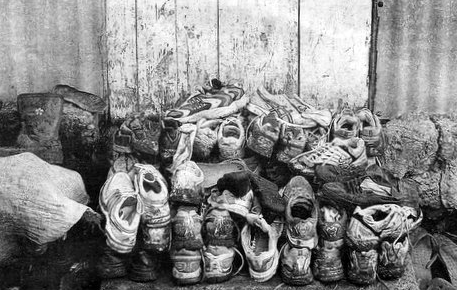By David
I should preface this post with the obvious. The views expressed on Swimwatch belong to this website alone. They are not endorsed by anyone else, especially not the Club that employs me as their professional swim coach. That qualification is necessary because New ZealandÔÇÖs clubs have been asked to comment on Swimming New ZealandÔÇÖs latest brain child; Project Vanguard. I do not want my Club or anyone else to be landed with the opinions expressed on that subject in this post.
Project Vanguard is a Swimming New Zealand initiative. ItÔÇÖs called their strategic plan. The national organization wants to replace the current 17 provincial associations with 8 super regions managed by 8 full time, paid employees who report to Swimming New Zealand in Wellington. Instead of local people running their own affairs from the bottom up we are told the top, thatÔÇÖs Swimming New Zealand, will provide their slick full time executives to make our lives better and our sport more efficient. At a meeting I was at in Auckland on Thursday this was described as ÔÇťmodern management practice at workÔÇŁ. The balance of this post will argue that their plan is flawed and the process that has given it birth is duplicitous.
Swimming New Zealand claims that it has surveyed and consulted New ZealandÔÇÖs provincial associations and a majority proposed the 8 super regions idea. I just do not believe thatÔÇÖs true. I would need to see the nine provincial submissions that suggest there should be no smaller regional associations and that Hawkes Bay, Southland, Manawatu and Auckland want their affairs run by Wellington employees. Without seeing the evidence I do not believe the provinces surveyed themselves into oblivion or handed over the management of their affairs to a Wellington bureaucrat. I think the idea was spawned in Wellington and is being peddled around the country as Swimming New ZealandÔÇÖs response to a grassroots demand for change. The truth is Swimming New Zealand saw Surf Lifesaving New Zealand increase the size of their empire recently and thought, ÔÇťThatÔÇÖs a good idea. We might be able to get away with the same thingÔÇŁ.
Swimwatch contributors have never liked the power building practiced by Swimming New Zealand. To no avail, we have spoken out against the central control that is now a key feature of New ZealandÔÇÖs elite swimming program. New Zealand performed better when Loader was in Dunedin, Simcic and Langrell were in Christchurch, Jeffs was in Wellington and Kingsman and Moss were in Auckland. What Swimming New Zealand needed to do was strengthen the structures that produced those swimmers; local structures that were owned and managed by good local coaches and administrators. Instead they sent everyone to something Swimming New Zealand controlled in Auckland. They built an empire. And since then New Zealand has been unable to win an Olympic medal of any sort. The centralized model has failed. That should not surprise anyone. Long term success in sport is best driven from the bottom up. American swimming is successful because it has an infrastructure of many strong clubs (North Baltimore, MAC, Texas, Cal, Stanford, Trojans) not because USA swimming controls the training Michael Phelps is going to do tomorrow morning.
Having failed to produce any Olympic results from the centralized elite sport model, what on GodÔÇÖs good earth is the incentive for us all to march down the same path and cede them control of the rest of New Zealand swimming? Someone should tell Swimming New Zealand that when they win four gold medals in London or Buenos Aires weÔÇÖll trust them with the rest of the sport. They are not very good at what they do now, without giving them the rest of the organization to play with.
At the Swimming New Zealand Annual General Meeting a remit was passed instructing Swimming New Zealand to stop communicating with members directly and requiring the national body to communicate only through the provincial organizations. The passing of the Manawatu Remit has everything to do with Project Vanguard. It shows that a healthy majority of the swimming regions in New Zealand do not trust the way Swimming New Zealand communicates with their members. The regions want to be responsible for communicating with their membership. And so they should. In a climate that proposed and passed the Manawatu Remit what delusionary national administrator thought there was support for Wellington taking over the running of all the provincesÔÇÖ affairs. The Manawatu Remit may or may not work, but it certainly sends a clear message. It says the provinces reserve the right to manage their own affairs, lock stock and barrel; not at all what the framers of the current Project Vanguard scheme had in mind. Well done Manawatu!
The big advantage of the current management structure is that local people control their own destiny. Auckland has an Executive Director who manages the affairs of the sport here and reports directly to an Auckland Board of Auckland club elected delegates. The organization is directly responsive to local demands something not guaranteed at all by Project Vanguard where the guy doing AucklandÔÇÖs work reports to Pelorus Trust Sports House, Hutt Park, Seaview, Wellington. If the Board of Swimming New Zealand believes that the provinces need help with their administration; if there is a call for change; and if Swimming New Zealand has a spare $400,000 to pay for 8 regional administrators then they should be sending $50,000 to each of the provinces to help the provinces pay for their own regional administrator. They should be strengthening diverse local structures, not creating their own personal Soviet empire. IÔÇÖm sure Auckland would appreciate a $50,000 contribution to the cost of its Executive Director way more than seceding control of half a million dollars worth of its assets to Wellington.
On the subject of assets; I understand there may be more than a million dollars of cash in the various provincial bank accounts. It would be disturbing if any of the motivation for more central control was based on Wellington getting their hands on that money. Give them five minutes and IÔÇÖd bet the house they would be charging the provinces management fees to pay for their ÔÇťmodern management practicesÔÇŁ. In five years the provincesÔÇÖ cash reserves would be gone; swallowed up to pay for Wellington excesses or the Millennium InstituteÔÇÖs experiment in foreign aid (all their coaches and the boss are Australian). Twenty years ago Swimming New Zealand had pretty substantial cash reserves. TheyÔÇÖve all gone now. Perhaps those who spent them are now looking around for their next cash windfall.
Almost always the accumulation of power by a central organization is a sign of weak management. The Millennium Institute is an example. Weak management strengthens itself. Strong management strengthens the surrounding community. Swimming New Zealand has not learned that particular ÔÇťmodern management practiceÔÇŁ. While they do, it should not be at the expense of the good people who bought and paid for this sport in New Zealand.




